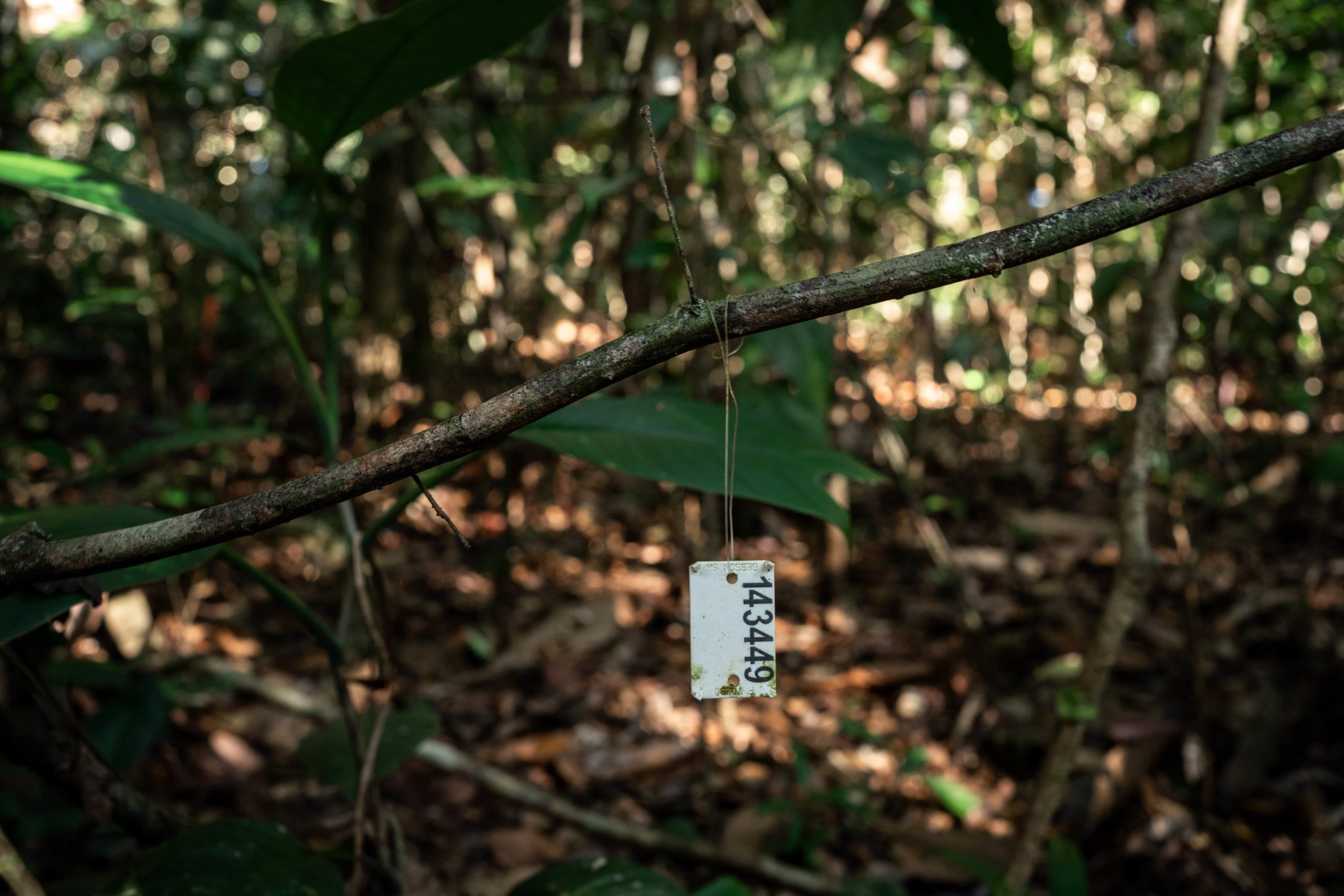
Observatories
Biodiversity observatories are based on continuous monitoring of ecosystems. They are of major scientific interest in understanding biological cycles and long-term ecological dynamics. The station actively supports 5 observatories.

A system of permanent forest vegetation monitoring plots covers more than 30 ha, in which all trees with trunks over 10 cm in diameter at breast height have been inventoried. Monitoring began in 1985. Tree diameters are re-measured every 5 years. The inventory of all trees with a trunk diameter at breast height of between 1 and 10 cm has been completed on 6 ha between 2021 and 2023, for a total of 25,629 trees. The scheme aims to understand the impact of climate change and local anthropogenic disturbances on forest dynamics, structure, carbon and biodiversity. This is achieved by gathering micro-environmental and demographic data from the trees as part of a modeling approach. The system is part of networks that bring together different forestry systems on a national and international scale. It involves a number of institutional partners, including CNRS, CIRAD, ONF and CESBIO.

A litterfall collection system has been set up at the Nouragues research station in French Guiana since 2001 (UMR MECADEV, Pierre-Michel Forget & Patrick Chatelet). Litterfall includes leaves, branches, fruits or flowers fallen from the different layers of the forest. The contents of 40 collectors are collected twice a month by the station's CNRS staff. The collectors consist of square pieces of large-mesh polyethylene fabric attached by ropes to four neighboring trees. The contents of the collectors are collected in kraft bags. It is dried in an oven at 80°C for 48 h. It is then weighed with an electronic balance with a precision of 0.1 g. The data collected allow us to better understand the seasonal cycles of litterfall in tropical forests and their role in the material cycle. The project is led by Jérôme Chave, CNRS Research Director at the Evolution and Biological Diversity Laboratory at Toulouse III Paul Sabatier University.

The HYBAM observatory is an observation system for the large-scale hydrological, biogeochemical and geomorphological study of rivers considered as sentinels of climate change and local land-use changes. The Nouragues research station is a collection site included in a larger network of 17 sites mainly distributed over the Amazon basin and its tributaries. CNRS staff at the station monitor the Arataye River once a month. The HYBAM observatory is an observation system funded by IRD, INSU and the Midi-Pyrénées Observatory in Toulouse.

The MONITOR project is a permanent passive acoustic monitoring station which has the overall objective of assessing the dynamics of animal diversity during annual cycles. The project mainly aims to monitor the annual phenology of key species of large birds, rodents, ungulates, primates, procyonids, marsupials, as well as the seasonality of terrestrial and canopy communities. The project is led by Jérôme Sueur, Professor at the National Museum of Natural History in Paris.

The PHENOBS project proposes to implement innovative approaches using drones, laser scanners, deep learning and citizen science, combined with measurements of physiological traits and the development of forest dynamics models, to enable quantitative monitoring of the phenology of Guyana's forests in interaction with climate variations and changes. The station's CNRS staff use a drone to photograph forest plots near the Inselberg camp once a month, in order to identify key phenological events (flowering, leaf loss, mortality, etc.).



